10 Recommendations to Reduce Youth Throwing Injuries
For anyone who is interested in youth baseball or softball, I urge you to pay attention to some of the data regarding youth throwing injuries. Some of the numbers are staggering. I would like to make this entire post HIGHLY based in the available research and evidence – not my opinions.
I am basically summarizing what has been researched and published in this post. Of course, I will elaborate on a few things along the way, but I will mostly let the data speak for itself.
Let’s start with a little background:
- Baseball/softball remains one of the safest overall sports to play
- Nevertheless, traumatic and overuse injuries occur regularly
- More and more young boys and girls are playing baseball/softball every year
- Despite pitch count rules, the incidence of youth injuries and surgeries is rising
- Adult throwing injuries are being attributed to injuries suffered as youths
The Rise of Youth Baseball Injuries
There is no denying the youth baseball injuries are rising. Below, I have summarized several research publications. During the 5 years from 1994-1999 compared the 5 years from 2000-2004:
- 4x increase in elbow surgeries in college baseball pitchers
- 6x increase in elbow surgeries in high school baseball pitchers
- 5x increase for injury with pitching >8 months/year
- 4x increase for injury with pitching >80 pitches/game
- 2.5x increase for injury with throwing >85 MPH
- 36x increase for injury when throwing with arm fatigue
- Injured pitchers threw 34 warm-up pitches vs. 26 warm-up pitches of un-injured pitchers
- Injured pitchers threw in 4 showcases vs. 1 showcase of un-injured
- Injured pitchers were 4cm taller and 5kg heavier
In 2006, 450 players (ages 7-11) without elbow pain pre-season:
- 30.5% reported elbow pain by end of season…of those, 72.3% had physical exam deficits…of those, 81.4% had radiographic abnormalities. This basically means kids with elbow pain actually had pathology, not just soreness!
- “Little League Elbow” – epicondylitis, apophysitis, physeal plate (growth plate) fracture, osteochondritis dissecans occurs in 20-40% of school aged pitchers
A 10-year study (from 1999-2008) 481 pitchers (ages 9-14) with an elbow injury defined as surgery or retirement due to pain:
- Pitching >100 innings/year = 3.5x more likely to be injured
- Playing pitcher and catcher – 2.5x more likely to be injured
A 2015 study on 420 healthy pitchers:
- 31% had a pitching-related injury (shoulder and elbow)…of those, 3 variables could predict injury 77% of the time
- Pitcher height
- Pitching velocity
- Pitching for more than one team
A 10-year study from 2002-2011 in New York State:
- There was a significant increase in the number of UCL reconstructions by 193%
- Becoming more common in adolescent athletes
- The average age at surgery going down = more kids are having Tommy John surgery at an earlier age
Dr. James Andrews – arguably the most prolific orthopedic surgeon of this era – has presented numerous times throughout his career about his concerns regarding youth injuries and increasing awareness…here is a graph showing the percentage of Tommy John’s surgeries he completes each year on youth (compared to collegiate and professional athletes):
Recommendations – Pitch Count & Playing Time
Through the combined efforts of many people, including Dr. James Andrews and Dr. Glenn Fleisig of ASMI, organizations like Little League Baseball and USA Baseball have adopted rules to help reduce overuse.
Our understanding the stresses placed on the arm, especially while pitching, has led to the institution of rules controlling the quantity of pitches thrown in youth baseball and established rest periods between pitching assignments.
Little League Baseball & USA Baseball have implemented the following pitch count recommendations:
- 9-10 years of age: 1000/season, 2000/year
- 11-12 years of age: 1000/season, 3000/year
- 13-14 years of age: 1000/season, 3000/year
- Pitcher-to-catcher ban: any pitcher who throws >41 pitches may not play catcher that day
Recommendations – Throwing Guidelines
In addition to the above pitch count rules, several other guidelines can be implemented based on what we have learned through scientific research:
- Avoid pitching with arm fatigue!
- Avoid pitching with arm pain
- Pitch less than 80 pitches/game at ALL adolescent levels
- Pitch less than 8months out of the year
- Pitch less than 100 innings in games in any calendar year.
- Pitch less than 2000-3000 pitches in competition/year (pending age)
The Ongoing Problem
Travel ball does not fall under the umbrella of Little League and USA Baseball and is often under the sole direction of the team and coach. This had led to continued overuse despite the best efforts of the medical community.
A recent national survey of 750 pitchers (ages 9-18) shows:
- 45% of youth pitchers pitched without a pitch count
- 43.5% pitched on consecutive days
- 30.7% pitched on multiple teams
- 19.0% pitched multiple games in one day
- 13.2% pitched year-round
- ~1/3 having a pitching-related injury in the past 12 months,
- 7/10 reported significant arm tiredness in the past 12 months
- Nearly 40 percent reported significant arm pain within the past 12 months.
- Arm Tiredness = 7.8x more likely to have an injury
The Impact of Long Toss and Pitch Type
In addition to simple overuse in throwing volume, there are other factors to consider such as long toss and pitch type.
What About Long Toss?
- 2011 Study = Hard, flat-ground throws have biomechanical patterns similar to pitching; however, maximum distance throws produce increased torque & changes kinematics. Therefore, use caution with use of these longer throws in rehab & training
What about flat ground vs. mound pitching?
- 2013 Study = “There is NO difference in kinematics or kinetics in pitching from a mound versus flat-ground conditions in adolescent baseball pitchers.”
What about curveballs, sliders, fastballs & change ups?
- In multiple studies (2002, 2006, 2008, 2011) = conflicting information…
- Most indicate fastballs have a greater overall torque on the shoulder and elbow than any other pitch
- However, what has been shown in some studies curveballs elicit more force through the shoulder whereas the slider places greater forces through the elbow
- The changeup is consistently shown in virtually all research to have the least amount of forces (shoulder AND elbow)
- None of the players in several studies threw anything but fastballs or changeups, so the information is lacking
How to Prevent Youth Throwing Injuries
There is overwhelming evidence that volume and overuse are single-handedly a major contributing factor to injuries in youth baseball. This is hard to deny. Throwing with pain and/or fatigue is the fastest way to be injured. You must listen to your body. Injuries are not always seen “in season” but the cumulative effects can negatively affect the long-term health of a pitcher. Pitch type is not as big of a concern; however, most youth do not have the appropriate control, body awareness/motor control and mechanics to throw efficiently and effectively, therefore breaking pitches are underemphasized early in youth pitching.
10 Recommendations to Reduce Youth Throwing Injuries
- Watch and respond to signs of fatigue:
- Decreased ball velocity, decreased accuracy, upright trunk during pitching, dropped elbow during pitching, or increased time between pitches). If a youth pitcher complains of fatigue or looks fatigued, rest is recommended
- No overhead throwing of any kind for at least 2-3 months per year. No competitive baseball pitching for at least 4 months per year
- Follow limits for pitch counts and days rest
- Avoid pitching on multiple teams with overlapping seasons
- Learn good throwing mechanics as soon as possible. The first steps should be (1) basic throwing, (2) fastball pitching, (3) changeup pitching…breaking pitches are not fundamental and youth players need foundation first
- A pitcher should not also be a catcher for his team. The pitcher-catcher combination results in many throws and may increase the risk of injury
- If a pitcher complains of pain in his elbow or shoulder, discontinue pitching until evaluated by a sports medicine physician
- Avoid using radar guns and emphasizing velocity with youth throwers
- Minimize showcases, especially in the “off” season
- Inspire youth pitchers to have fun playing baseball and other sports. Participation and enjoyment of various physical activities will increase the youth’s athleticism and interest in sports
Closing Thoughts
I threw a lot of information at you. But you can use this as a resource in the future. I want everyone to understand NONE of these are rules…just guidelines/suggestions.
But I am not talking about my opinion or something I saw or heard or know a guy who said something I thought made sense. It is research. Actual evidence. Measurable data.
I am not here to start a debate or judge anyone for anything. I am simply packaging the best information I could gather and put it all in one place.
My final thought is this: I love baseball. I want you and your children to play baseball or softball. Let your kids be a part of arguably the greatest sport on the planet – a sport that has some of the best teaching lessons and analogies for life. Work hard to get better and be better. Strive for improvements. Just watch volume and be smart about things. Have a great season!
 Download Our FREE Arm Care Program
Download Our FREE Arm Care Program
We believe one of the core pillars of baseball performance and injury prevention is a solid arm care program. We’ve developed an arm care program using the latest science and evidence to help keep you injury free and maximize your arm. Click below to download for free:
References:
- American Academy of Pediatricians. Policy statement: baseball and softball. Pediatrics. 2012;129:e842-e856.
- American Sports Medicine Institute. Position statement for youth baseball pitchers. http://www.asmi.org/asmiweb/position_statement.htm Accessed March 10, 2016.
- Cain EL Jr, Andrews JR, Dugas JR, et al. Outcome of ulnar collateral ligament reconstruction of the elbow in 1281 athletes: results in 743 athletes with minimum 2-year follow-up. Am J Sports Med. 2010;38:2426-2434.
- Chen FS, Rokito AS, Jobe FW. Medial elbow problems in the over head throwing athlete. J Am Acad Orthop Surg. 2001;9:99-113.
- Dun S, Loftice J, Fleisig GS, Kingsley D, Andrews JR. A biomechanical comparison of youth baseball pitches: is the curveball potentially harmful? Am J Sports Med. 2008;36:686-692.
- Fleisig GS, Andrews JR, Cutter GR, et al. Risk of serious injury for young baseball pitchers: a 10-year prospective study. Am J Sports Med. 2011;39:253-257.
- Fleisig GS, Barrentine SW, Zheng N, Escamilla RF, Andrews JR. Kinematic and kinetic comparison of baseball pitching among various levels of development. J Biomech. 1999;32:1371-1375.
- Olsen SJ, Fleisig GS, Dun S, Loftice J, Andrews JR. Risk factors for shoulder and elbow injuries in adolescent baseball pitchers. Am J Sports Med. 2006;34:905-912.
- Fleisig GS, Bolt B, Fortenbaugh D, Wilk KE, Andrews JR. Biomechanical comparison of baseball pitching and long-toss: implications for training and rehabilitation. J Orthop Sports Phys Ther. 2011;41:296-303.
- Fleisig GS, Kingsley DS, Loftice JW, et al. Kinetic comparison among the fastball, curveball, change-up, and slider in collegiate baseball pitchers. Am J Sports Med. 2006;34:423-430.
- Fleisig GS, Phillips R, Shatley A, et al. Kinematics and kinetics of youth baseball pitching with standard and lightweight balls. Sports Engineering. 2006; 9:155-163.
- Fleisig GS, Weber A, Hassell N, Andrews JR. Prevention of elbow injuries in youth baseball pitchers. Curr Sports Med Rep. 2009;8:250-254.
- Fortenbaugh D, Fleisig GS, Andrews JR. Baseball pitching biomechanics in relation to injury risk and performance. Sports Health. 2009;1:314-320.
- Little League Baseball. Protecting young pitching arms. http://www.littleleague.org/Assets/old_assets/media/pitch_count_publication_2008.pdf. Accessed February 12, 2016.
- Nissen CW, Westwell M, Õunpuu S, Patel M, Solomito M, Tate J. A biomechanical comparison of the fastball and curveball in adolescent baseball pitchers. Am J Sports Med. 2009;37:1492-1498.
- Nissen CW, Westwell M, Ounpuu S, et al. Adolescent baseball pitching technique: a detailed three-dimensional biomechanical analysis. Med Sci Sports Exerc. 2007;39:1347-1357.
- Sabick MB, Kim YK, Torry MR, Keirns MA, Hawkins RJ. Biomechanics of the shoulder in youth baseball pitchers: implications for the development of proximal humeral epiphysiolysis and humeral retrotorsion. Am J Sports Med. 2005;33:1716-1722.
- Stop Sports Injuries. http://www.stopsportsinjuries.org. Accessed on March 19, 2014
- https://mikereinold.com/tag/weighted-ball-program. Accessed on March 10, 2016
- Hodgins JL, Vitale M, Arons RR, Ahmad CS. Epidemiology of Medial Ulnar Collateral Ligament Reconstruction: A 10-Year Study in New York State. Am J Sports Med. 2016 Mar;44(3):729-34.
Joel Novak
Joel is a physical therapist at Community Health Network in Indianapolis, IN.My primary focus is empowering and enabling patients to achieve their goals while providing instruction and meaningful treatments.
Latest posts by Joel Novak (see all)
- 10 Recommendations to Reduce Youth Throwing Injuries - April 4, 2017

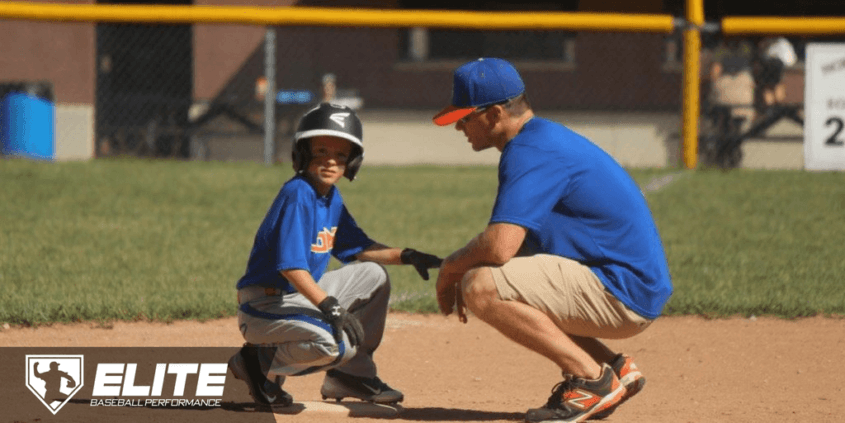




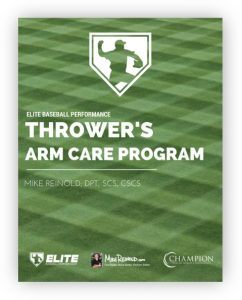



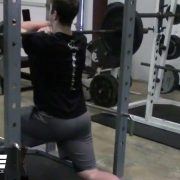
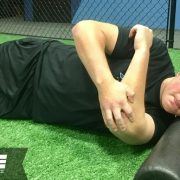
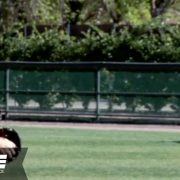



Leave a Reply
Want to join the discussion?Feel free to contribute!